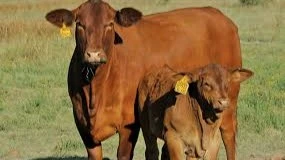Mitigating food access gaps in areas close to wildlife sanctuaries relevant

FINDINGS from research work at a university in the US say that lack of food, not money, is the primary driver of poaching in Tanzania’s Mkomazi National Park.
A doctoral student led the survey, based on a study covering 267 household heads in villages bordering the park to understand the factors leading to illegal activities in the park.
The findings were not surprising but there are suggestions for sustainable solutions balancing conservation and local needs.
This is something observable at a distance, but it takes a fully structured scientific study to make the necessary precision on the issues concerned, particularly as to the extent to which community needs impinge on conservation.
The authors say the study sheds light on the complex relationship in human livelihoods and wildlife conservation in East Africa and is likely to be applicable elsewhere.
In the survey, the researchers picked a range of needs and sought responses specifically to each, namely, food security, financial security and educational security. Each may lead to poaching.
The background is that the park, established in 1951, covers more than 1,200 square miles (3,100 square kilometres) of protected habitat for otherwise endangered wildlife, including elephants, lions, buffalo and rhinoceroses.
The study said that the gazetting of the park displaced large numbers of people, creating tension between conservation efforts and local communities’ needs.
That looks somewhat curious as the zone is rather sparsely populated, with urban settlements along the main roads as well as densely populated cool mountain areas. The parks were being created from wild zones teeming with animals.
The research findings challenge common assumptions about the motivation for poaching, with a study supervisor and assistant professor saying that residents of the zone has relied on the animals for generations on end.
That too has its limitations as it is largely an assumption, while ‘area histories’ in the 1960s before they were largely discontinued showed that most ethnic groups are migrants in their areas.
The authors say locals relied on the nearby wild zone for supply of the likes of meat, traditional medicines, firewood, fish and timber and were then simply cut out.
Looking at the history of how the country arrived at independence, moving thousands of people out of an area to create a national park was sort of unlikely as late as 1959 where even the paper date of independence had already been agreed.
Many will recall the placard that Mwalimu JK Nyerere was brandishing in the old city of Dar es Salaam upon returning from Lancaster House apparently in 1958 as brief and clear, on ‘Complete Independence, 1961.’
Where parks were created and there were native people, dual usage structures were formulated – and this facilitated population increase, just as still applies to date.
Even if one discounts the presumed infringement on traditional rights by gazetting the zone as a national park, it remains true that people near the area find it much easier to hunt in the park than to buy meat.
The taste of some penal provisions was painfully experienced a few months ago when a widowed mother was sentenced to imprisonment for being found in possession of antelope meat or something of the sort.
Namibia and Botswana opted to cull elephants and buffaloes in the wake of a prolonged drought, handing the meat to residents. A policy worth adopting – or not?
Top Headlines
© 2024 IPPMEDIA.COM. ALL RIGHTS RESERVED

















